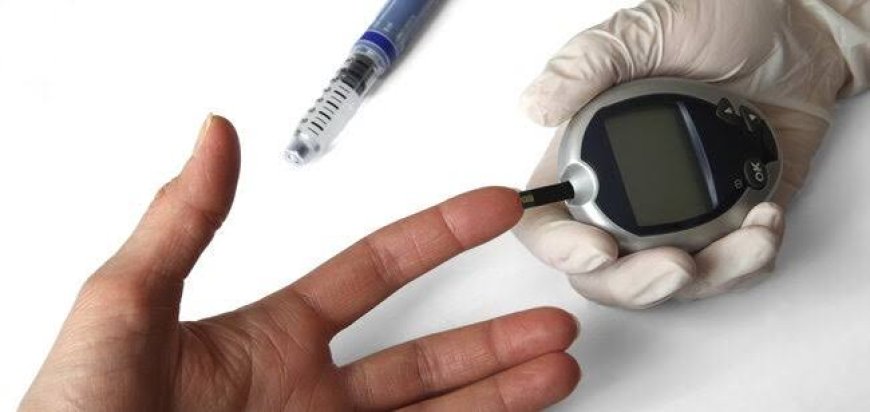A Complete Study of Type 1 and 2 Diabetes

Nairobi,
Saturday, 22 February, 2025
McCreadie Andias
A Complete Study of Diabetes Provides Information About Type 1 and Type 2 Conditions
The chronic health condition diabetes mellitus known as diabetes controls the process through which your body generates energy from food intake.
Two different forms of diabetes exist as Type 1 and Type 2 which each possesses distinct initiating factors together with developmental courses and therapeutic requirements.
The proper distinction between these two diabetes types proves essential for achieving successful medical outcomes and better life quality.
Type 1 Diabetes
The pancreas regulatory system known as type 1 diabetes exists as an immune system condition which destroys insulin-producing beta cells. Patients with this condition develop a complete absence of insulin production because insulin serves as a necessary hormone to let glucose enter cells as cellular energy.
The absence of insulin causes blood glucose levels to increase thereby producing numerous health problems in patients.
According to Dr. Jane Smith endocrinologist "The immune system of patients with Type 1 diabetes essentially fights itself thus destroying vital blood sugar controlling cells." (sourced interview)
Physicians link the onset of autoimmune attacks in Type 1 diabetes to both inherited factors and outside factors such as virus infections. The onset of Type 1 diabetes can occur in people of all ages although children and young adults typically get diagnosed with this condition.
Symptoms and Management of Type 1 Diabetes
The symptoms normally emerge quickly through these manifestations:
Excessive thirst and frequent urination
Unintended weight loss
Blurred vision
Fatigue
Persistent hunger
Patients need to administer insulin regularly using either infusions or injection devices for maintaining their blood glucose within specified target levels. Strategic blood sugar level tracking joined with proper nutrition and active exercise form indispensable components to achieve effective diabetes management.
Type 2 Diabetes
The clinical features of type 2 diabetes involve both insulin resistance which causes cells to poorly react to insulin and gradual insulin production reduction. The prevalent form holds a statistics of 90 to 95 percent for all diabetes cases.
The diabetes specialist Dr. Michael Johnson describes Type 2 diabetes as a condition that establishes through multiple years before adult diagnosis yet it affects more young people lately because of rising obesity statistics.
Different risk elements together with the symptoms that characterize the development of Type 2 Diabetes
Multiple circumstances elevate an individual's chances of suffering Type 2 diabetes.
Being overweight or obese
Physical inactivity
Family history of diabetes
Age, particularly over 45
History of gestational diabetes
People with type 2 diabetes often notice symptoms emerge slowly through various physical indications.
Increased thirst and urination
Increased hunger
Fatigue
Blurred vision
Slow-healing sores
Management and Prevention of Type 2 Diabetes
The management of Type 2 diabetes starts with considerable lifestyle changes.
The diet plan should consist of whole grains and lean proteins and healthy fats together with various fruits and vegetables as it reduces the consumption of processed foods along with added sugars.
Regular exercise should involve minimum 150 minutes of moderate physical activity during a seven-day period.
The process of weight management enables people to control their insulin sensitivity levels effectively.
The achievement of target blood sugar levels might require medication or insulin therapy in particular situations.
According to Dr. Emily Davis who is a nutritionist maintaining a well-balanced diet with proper physical exercise effectively controls Type 2 diabetes and reduces the risk of such diabetes in people who are susceptible.
The two diabetes types differ through their distinct patterns of development along with their resulting insulin production.
The beginning of Type 1 disease happens quickly during youthful years yet Type 2 develops progressively with maturity.
In Type 1 diabetes patients have minimal insulin production while Type 2 diabetes patients begin by resisting insulin before their insulin production decreases.
The management approach for Type 1 diabetes includes permanent insulin therapy yet Type 2 diabetes treatment begins with lifestyle adjustments followed by medication use or maybe insulin treatment based on disease severity.
The correct recognition of the differences separating Type 1 and Type 2 diabetes helps patients achieve better management control together with prevention outcomes. People living with diabetes need to provide daily care but the ongoing research advancements yield better results and extended life expectancy.
(Some Interview segments of this Publication have been sourced from external outlets)
What's Your Reaction?



































































































































































































































































































